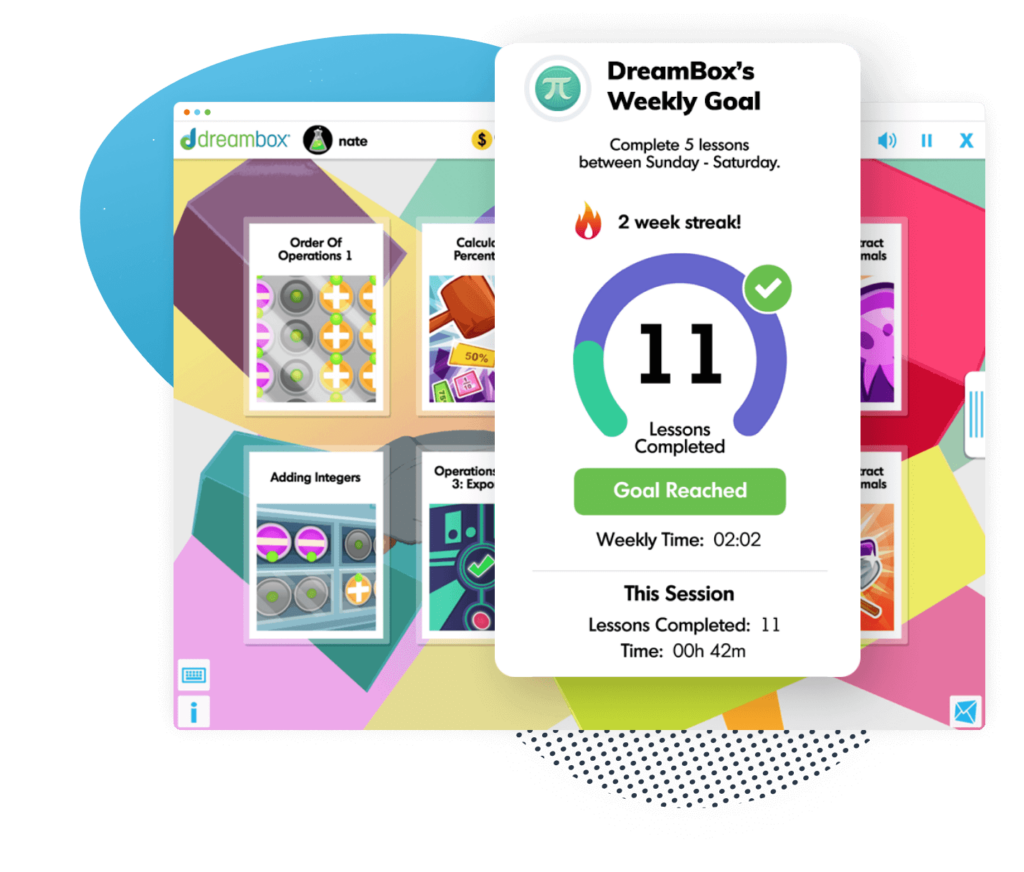2nd Grade Homeschool Curriculums
Discover what second grade homeschoolers need to know and learn more about choosing a 2nd-grade homeschool curriculum.

Author
Lisa Luciano
Published:
March 2025
Key takeaways
- • Find out which subjects second-grade homeschoolers need to learn
- • Explore some curriculum favorites and get some tips from a seasoned homeschool mom
- • Discover how to get the most out of your 2nd-grade homeschool curriculum
Second grade is a fun place to start if you are beginning the homeschool adventure. If you have already started homeschooling, second grade can be a fruitful year of skill building, where the hard work starts to pay off.
As a first-year public school teacher, I loved my second-grade class. I was bursting with creative (and sometimes crazy) ideas. Fortunately, those second-grade students happily joined me on the wild, rollercoaster ride of an enthusiastic rookie teacher! They were curious, delightful, eager learners. Many of my second-grade students were already able readers, but some struggled.
Fast forward to my career as a homeschooling mom, and things weren’t much different. When some of my children hit second grade, they caught on to reading and never looked back. Other children struggled with reading when they reached second grade. Some ignored reading, preferring hands-on play and outdoor activities.
Second graders represent various levels of reading, writing, and math skills. As parents, we provide the curriculum, maintain a consistent structure, and promote a positive environment. Second-grade students will get there at their own pace. Second grade is the perfect time to learn new skills, let curious minds discover answers, and build a foundation for lifelong learning.
Which subjects are taught in the 2nd grade?
A 2nd-grade homeschool curriculum focuses heavily on language arts and mathematics. It may also include science, social studies, art, music, and physical education. Here are some specifics about each subject area:
Language Arts
A second grade homeschool curriculum builds on language arts skills, which include: reading, writing, spelling, speaking, and listening.
- Reading
Second-grade reading includes literacy, reading fluency, and vocabulary building. Lots of reading practice helps students make progress.
- Writing
Second-grade writing is often based on what second-graders read. They can build writing skills by taking notes on what they read, and practice using proper capitalization and punctuation.
- Spelling
Second graders learn relationships between letters and sounds and learn to recognize spelling patterns.
- Speaking and Listening Skills
A second-grade curriculum doesn’t have to include standalone lessons for speaking and listening skills. These skills can be taught across different subject areas, and practiced in everyday life. Speaking and listening skills for second graders include:
- Speaking clearly
- Asking and answering questions
- Telling a story
- Sharing opinions
- Participating in conversations
- Listening and following directions
- Taking turns listening and speaking
Math
Within a second-grade homeschool math program, these key areas of math are typically covered:
- Number sense and operations: skip counting by 5’s, 10’s, and 100’s; counting to 1,000; place value to the hundreds’ place; adding and subtracting numbers up to 1,000; comparing 3-digit numbers (greater than, less than, equal)
- Measurement: measuring and estimating with standard units; telling time; counting money; simple graphing
- Geometry (shapes): recognizing and drawing shapes; dividing shapes into equal parts.
- Simple fractions: understanding that fractions are parts of a whole; matching fractions to pictures.
Science
Science for second graders may include topics such as plant anatomy, plant life, animal life, food, weather, soil and rocks, rivers and oceans, and astronomy. Science for second graders can include hands-on activities and experiments.
Art
Second-grade art helps students learn how to represent people, nature, and animals using a variety of dimensions and art tools.
Social studies
Second-grade social studies helps students use reading, writing, and critical thinking skills as they explore history, government, maps, culture, and society.
Music
Second-grade music may include a basic understanding of melody, pitch, and rhythm. Homeschool music may include learning an instrument and playing or singing in a group. Music studies may include historical music periods and the lives of composers and musicians.
Physical Education
Homeschool physical education can improve fitness, boost self-confidence, and reduce stress. A second-grade curriculum in P.E. can include active and creative physical athletics such as running, hopping, tumbling, games, dance, and obstacle courses.
Table of contents
Get help with homeschool math with DreamBox!
How to Choose a 2nd-grade Homeschool Curriculum
Choose a homeschool second-grade curriculum that is multi-sensory, sequential, builds on skills and keeps learning fun. Students learn in different ways, and a second-grade homeschool will include various learning styles:
- Visual: reading simple chapter books, watching educational videos
- Tactile-kinesthetic: movement, hands-on activities
- Auditory: listening to audiobooks and songs
- Multi-sensory: using more than one learning style, such as listening to an audiobook while reading.
Here are some questions to keep in mind when searching for a 2nd-grade homeschool curriculum:
- Is the curriculum multi-sensory?
- Will the curriculum make learning fun?
- Are there lessons that reinforce skills?
- Can you track progress and mastery of skills?
What are the best 2nd-grade homeschool curriculums?
Reading 2nd-grade homeschool curriculum
As mentioned before, don’t stress if your child is not reading fluently. If you keep your students practicing, and you make time for fun reading, it will come a lot faster than if you make reading a stressful grind. I recommend the Five-In-A-Row series as an effective choice that uses available library books and teaches concepts across the curriculum. Reading, reading, and more reading is the best way to promote literacy and reading fluency. For supplemental reading time, here is a list of second-grade favorites (audio versions are available for most of these):
- Horrible Science and Horrible History by Nick Arnold (my boys loved these!)
- The Boxcar Children Series by Gertrude Chandler Warner
- Magic Treehouse Series by Mary Pope Osborne
- Fancy Nancy Series by Jane O’Connor
- Nate the Great series by Marjorie Weinman Sharmat
- Cam Jansen series by David A. Adler
- A-Z Mysteries by Ron Roy
Writing 2nd-grade homeschool curriculum
It seems as if students either are prolific writers, filling up pages and pages with stories, or they face a blank page with fear and trepidation. I was clueless about how to teach writing until I attended an IEW seminar for homeschooling parents. IEW (Institute for Excellence in Writing) makes writing easy to teach and it makes the writing process enjoyable for students. If you feel unqualified to teach writing, you will enjoy IEW. Like reading, the more students write, the better their skills become. Sneak mini-writing assignments into every subject area. Here are some additional ways to incorporate more writing into your second grader’s everyday life:
- Write 5 minutes in a journal every day. I set the timer for 5 minutes. (The teacher can write too!)
- Write down your latest dream.
- Write about fun things you have done as a family.
- Find a pen pal.
- Write thank you notes.
- Write lists: 10 favorite snacks, 10 things you enjoy doing in the summer, 10 places you’d love to visit, etc.
Math 2nd-grade homeschool curriculum
We have tried more than a few math options over the years. I have found Teaching Textbooks to be effective for the learner, and easy for the parent to track progress. Homeschoolers also like Math-U-See. Playing math games is a great way to take a break from bookwork while boosting skills. For more help, check out “What’s the Best Homeschool Math Curriculum?”
Science 2nd-grade homeschool curriculum
Nancy Larson Science is easy for parents and fun for kids. This curriculum offers hands-on activities and a multi-sensory approach. Hands-on learning is ideal for science, and your local library offers books packed with experiments and projects for kids to try, such as Awesome Science Experiments for Kids by Crystal Chatterton.
History 2nd-grade homeschool curriculum
A top homeschool history curriculum 2nd-grade choice for us was Story of the World in audiobook form, narrated by the engaging Jim Weiss. (Try it at home or on the road.) For American History, try the Evan-Moor American History pockets. I highly recommend supplementing any history curriculum by reading living books, which are available at your local library. Some of these would fit a second-grade reading level, but they are also ideal for parent read-alouds:
- Little House series by Laura Ingalls Wilder
- Blast to the Past series by Stacia Deutsch
- I Survived series by various authors
- Childhood of Famous Americans series by various authors
- American Girl Mysteries by various authors
- Dear America Diaries by various authors
Art 2nd-grade homeschool curriculum
I like to fit art in alongside the other subjects I am teaching. We have used and enjoyed the Draw Write Now workbooks, which integrate art with reading and writing.
Physical education 2nd-grade homeschool curriculum
Early on, I had to learn that physical education was more than just telling the kids to “go outside and play!” Physical education is a natural part of home-based education and can be fun and fulfilling for the entire family. These books can be an ideal fit for any second-grade homeschool curriculum and work for all ages:
- The Ultimate Homeschool Physical Education Game Book: Fun & Easy-To-Use Games & Activities To Help You Teach Your Children Fitness, Movement & Sport Skills by Guy Bailey
- Home School Family Fitness: The Complete Physical Education Curriculum for Grades K-12 by Dr. Bruce Whitney

The math program that drives results
Get started today!
DreamBox adapts to your child’s level and learning needs, ensuring they are appropriately challenged and get confidence-building wins.
How to Get the Most Out of Your Curriculum
One way to maximize your curriculum is with what I call subject mashups. Subject mashups can make lessons more fun and memorable because they connect subjects together and offer multi-sensory learning. The idea is to integrate what you are teaching in one area of the curriculum with another subject. Research suggests that integrating the curriculum benefits learners because it ties concepts together, making connections that reflect the real world. Here are some examples of subject mashups:
- Make clay sculptures of what you are learning in science (art + science)
- Draw a diagram of a cell (art + science)
- Create a poster advertising your favorite book (art + language arts)
- Write a poem or story and paint a picture (writing + art)
- Compose a song about an animal (music + science)
- Paint a diagram of a plant (art + science)
- Create a silly rhyming song about learning shapes (math + writing + music)
- Sketch a picture of a pioneer log cabin (history + art)
2nd Grade Homeschool Tips
Choosing the right curriculum is important, but there’s more that goes into creating a successful homeschooling year. Consider these helpful hints from a seasoned homeschooling mom:
- Stay consistent. Students benefit from a consistent daily schedule, so keep school time a priority.
- Set goals. Although life happens, it helps to create goals. Writing them down is key!
- Take breaks. Don’t forget to change up the routine now and then with a field trip, big art project, or hands-on outdoor activity.
- Join a local homeschool group. Having a community can provide support, ideas, and student socialization opportunities.
- Be encouraged. If you get bogged down or discouraged, remember you can start fresh tomorrow. Reach out for help and inspiration from other homeschool parents.
Conclusion
Finding a 2nd-grade homeschool curriculum can be challenging at first glance. From freebies to expensive textbooks, there’s a lot out there. Whether choosing a homeschool math program, or a language arts curriculum, be sure to choose a 2nd-grade curriculum for homeschool that will make learning fun for the student and easy for you to track progress. If unsure about which materials would best suit your child, try reaching out for advice from others in your local homeschooling group.
FAQs about 2nd Grade Homeschool Curriculums
A 2nd-grade homeschool curriculum should be engaging, multi-sensory, systematic, and sequential. A second-grade curriculum homeschool doesn’t have to be expensive. A great way to see if you like a homeschool curriculum is to borrow one from another homeschooler or purchase a used copy to see if it works for your family and your child’s learning style.
Homeschool instruction for a second grader doesn’t have to last all day. Typically, you can complete formal second-grade homeschool instruction within 2- 3 hours. In the afternoon, you can support learning with activities like reading, outdoor play, and extra-curriculars.
Second graders may enjoy music lessons or sports. Some libraries and community centers offer groups, clubs, or classes for games, chess, lego building, art, drama, or science. 4H organizations teach a variety of life skills. Second graders can learn simple cooking, baking, and gardening skills. Volunteer work with the family can be rewarding, too.

About the Author
Lisa Luciano
Lisa Luciano earned a B.A. in Elementary Education from Wheaton College. After graduation, she worked at an Asian refugee camp for a year, then taught in the St. Paul Public Schools. She has been a homeschooling mom for the past 28 years. In 2021, Lisa launched a freelance writing business (Eleven Star Content, LLC). In her free time, she enjoys sewing for her Etsy shop and listening to audiobooks while walking. Lisa and her husband José have eleven children and live in rural Minnesota.
Take at home math practice to the next level
Empowering parents and educators to make math practice more impactful. Plus, your kids will love it.


